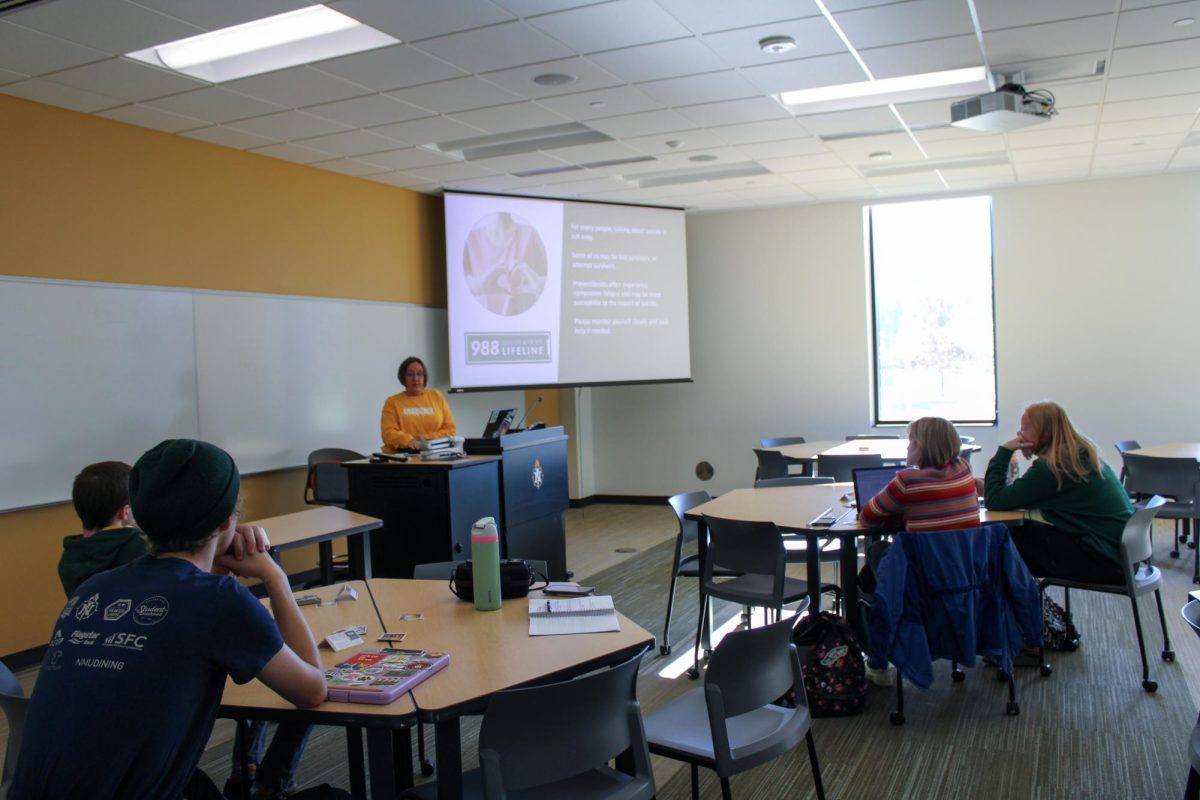Opinion — Song dissection of “Funny the Way It Is”
Challenging listeners to contemplate the duality of life
November 30, 2022
At a recent worship service, my church celebrated All Saints Day. The service was dedicated to acknowledging those from our congregation who have passed away in the last year, with a candle being lit and placed on the church’s altar for each individual.
Coincidentally, two children were baptized during the same service.
The combination of these obviously contradictory celebrations — one commemorating the conclusion of a journey in faith while the other marking the start of a new one — moved me to tears.
Granted, it does not take much for me to cry. To put my shedding of tears into perspective, I have cried while watching the sunrise, while petting strangers’ dogs and – most often – from laughter. But my tears that Sunday morning in the church were not random, for the service reminded me of a song that my mother introduced me to at a young age.
“Funny the Way It Is,” is the third track on the Dave Matthews Band’s 2009 album “Big Whisky and The GrooGrux King.” The song provides an in-depth examination of the world in which we live, discussing the highs and lows, fortunes and misfortunes, that are simply out of our control.
Utilizing a point and counter-point structure, the song will first paint a pleasant image of a seemingly everyday activity. For instance, the song opens by stating: “Lying in the park on a beautiful day, sunshine on the grass and the children play.”
Immediately following these lines, however, is the description of a tragic event: “Siren’s passing, fire engine’s red. Someone’s house is burning down on a day like this.”
The song is filled with nearly ten of these analogies, and the introduction of each hits like a punch in the gut.
I vividly remember the first time I heard “Funny the Way It Is.” My mother sat my brother and me down beside a bonfire at my old camp, both of us around the ages of 10 and 11. The song began to bellow out of our well-used CD player, and my mom said, “I want you guys to listen to this song.”
You would think children our age would not be able to grasp the deep, and maybe even dark, subject matter of the song. Yet, tears ran down my face after hearing the line “one kid walks ten miles to school, another’s dropping out.”
Maybe it was the topic of school that tuned me into the song’s true meaning, but I could not help but feel guilty about all the times I said I hated going to school at that moment beside the bonfire.
The song continues, having no shame in reminding us that whenever we choose to dine at a restaurant, there is someone who cannot afford to eat. Whenever we are enjoying a relaxing car ride with our friends, a domestic dispute may be occurring in one of the passing houses. While we laugh at children playing games like “war,” innocent people are suffering from the consequences of military conflict.
Instead of calling us to action, however, the song reminds us throughout its four-and-a-half-minute run-time that the co-existence of these types of scenarios is not right or wrong. Most of them are out of our control.
“Funny the way it is, and if you think about it,” is the 11-word line that we hear at the beginning of each of the song’s three choruses. The repeating of this phrase reminds us that while we should be upset about the loss, suffering and grief that exists in everyday life, it is important to acknowledge and accept the fact that we cannot control those negatives whether we like it or not.
When considering other songs that discuss this same concept, I instantly thought of Tracy Chapman’s “Why?” the eighth track on her 1988 album. Chapman, however, proclaims quite a different life mantra in her song in comparison to “Funny the Way It Is.” Unlike the Dave Matthews Band, who views things in an “it is what it is” manner, Chapman begs for an answer to the suffering she has seen around the world.
“Why?” opens with the question of why children are starving when there is enough food to feed the world, a similar scenario to the one seen in “Funny the Way It Is.” Instead of avoiding an explanation or solution to the problem, however, Chapman demands somebody — likely someone in a position of power — to answer quickly before time runs out.
So, what is the right way to look at life? Even better, is there a right way to look at life?
While that is a question that I do not believe I am qualified to answer, I can say that there are lessons to learn from both “Funny the Way It Is” and “Why?”.
Some injustices in our world demand and deserve immediate action, as Chapman argues. We must also view the unfortunate incidents that occur at random on a daily basis, like those described by the Dave Matthews Band, as just that — unfortunate incidents. However, as “Funny the Way It Is” illustrates, every misfortune in life is complimented by a beautiful moment.
My experience in church as we celebrated All Saints Day is a brilliant example of this. The loss of life will always be tragic, especially when it is those that we consider to be loved ones. However, hope can be seen in the children being born today who will eventually be the leaders of our future.
Editor’s Note: The North Wind is committed to offering a free and open public forum of ideas, publishing a wide range of viewpoints to accurately represent the NMU student body. This is a staff column, written by an employee of the North Wind. As such, it expresses the personal opinions of the individual writer, and does not necessarily reflect the position of the North Wind Editorial Board.


























